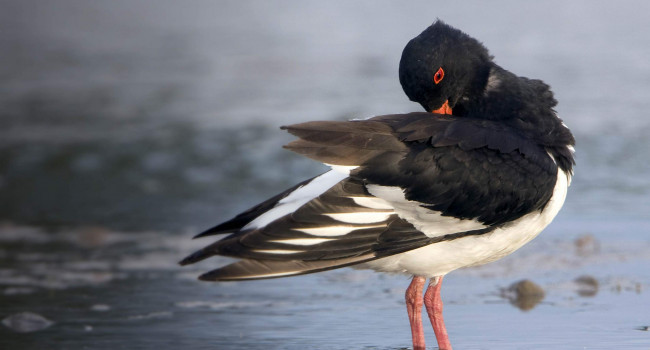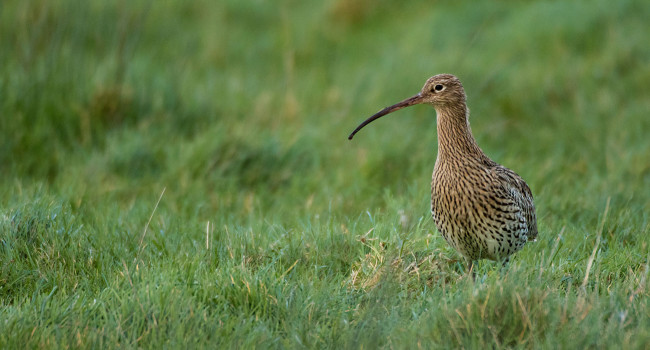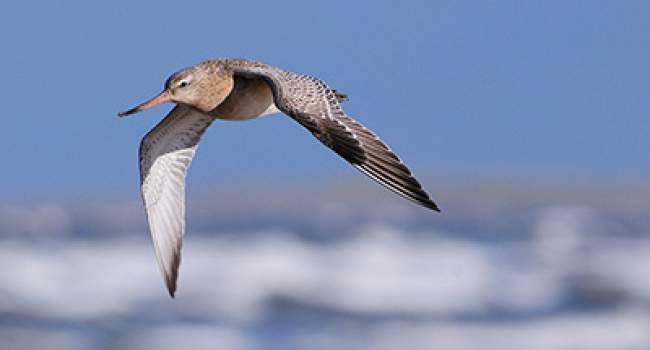Contrasting habitat use between and within Bar-tailed Godwit and Curlew wintering on the Wash, England

Author(s): Pell, R.J., Clark, J.A. & Robinson, R.A.
Published: January 2024
Journal: Wader Study Volume: 130
View on journal websiteIntertidal habitats are often well-used by waders outside the breeding season, but some species also make use of other adjacent habitats during this period, including agricultural fields. Understanding the importance of these non-tidal habitats for waders is crucial, especially as such land is rarely included within the protected areas designated for these species. This study investigates the use of non-tidal habitats bordering The Wash – an estuary in eastern England – by Curlew and Bar-tailed Godwit, species which are designated as ‘Near Threatened’ by the IUCN.
Information on the winter-feeding distribution of the two species was collated from resightings of individually colour-marked birds, initially caught and ringed at sites around The Wash by the Wash Wader Research Group. The sex of individual birds was determined from measurements taken in the field, and this provided an opportunity to determine if males and females differed in their use of the available habitats.
The resightings revealed that Bar-tailed Godwits were only seen on intertidal habitats and none were observed feeding inland. In contrast, colour-marked Curlews were regularly observed feeding on agricultural fields, the colour-marks revealing that the majority of individuals were feeding on both fields and mud flats.
Importantly, those Curlews seen feeding in fields were significantly more likely to be male and those on the estuary more likely to be female. Although there is a small degree of overlap, female Curlews have longer bills than males. The difference in habitat use evident in the resighting data probably reflects the fact that the longer-billed females can access more intertidal worms and are more efficient feeders when probing. Shorter-billed individuals may be better suited to feeding in the denser substrate typical of agricultural fields, and they may also struggle to find sufficient prey when using intertidal areas.
That inland fields are used by increasing numbers of Curlews, particularly males, through the winter months has implications for existing conservation approaches. The Wash is protected by various national and international designations, but these relate primarily to the intertidal habitats; the inland fields are not protected and are subject to pressure on land for development. Should these inland feeding sites be lost this is likely to affect males (particularly those with the shortest bills) disproportionately, which may have implications for the wider Curlew population. The study’s findings suggest that consideration should be given to extending the area around The Wash receiving protection.







Share this page